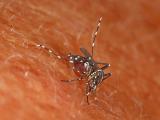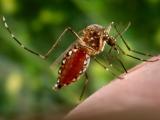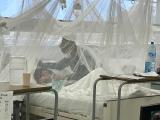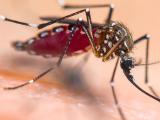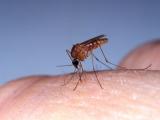Oct 31, 2011 (CIDRAP News) – In a study of respiratory tissue samples from patients who died from undiagnosed respiratory illnesses during the 2009 H1N1 pandemic, more than half were negative for the virus, shedding light on a host of other diseases that often had similar clinical signs.
Researchers from the US Centers for Disease Control and Prevention's (CDC's) Infectious Diseases Pathology Branch analyzed tissue specimens from 450 patients that they received from Apr 29, 2009, through May 5, 2010. Their findings appear in the November issue of Emerging Infectious Diseases.
To explore other respiratory diseases that patients died from during the pandemic, they focused most of their analysis on the 250 samples (56%) that were negative for the 2009 H1N1 virus after real-time reverse transcription polymerase chain reaction (rRT-PCR) testing. Patients ranged in age from 8 days to 81 years. Of 164 with available medical information, 127 (77%) had one or more underlying medical conditions.
People who died from other respiratory diseases were more likely than H1N1 patients to be young and less likely to be obese or have asthma. Fever, cough, and shortness of breath were also less common.
The group analyzed the negative 2009 H1N1 samples further, including use of special histochemical stains, immunohistochemical tests, and molecular assays. They found at least one etiologic agent in 69 (28%) of the 250 specimens. Bacterial pathogens were found in 44 patients, with Staphylococcus aureus and Streptococcus pneumoniae most common.
Viral agents were found in the specimens of 26 patients, and most were seasonal or unsubtypable influenza A viruses. Others included respiratory syncytial virus and adenovirus. The pathology team found multiple fungal pathogens in samples from two patients.
They also detected reportable disease agents such as dengue virus, vaccine-preventable diseases, and zoonotic agents, including Leptospira.
Many of the diseases had respiratory features, with nonspecific symptoms that mimicked influenza, the group wrote.
"Infections other than influenza should be considered during a pandemic and during an endemic influenza season to facilitate the diagnosis of illness and treatment of patients with complications or severe respiratory infections," they wrote.
The patterns they found in patients who did have 2009 H1N1 infections were consistent with risk-factor profile other studies have found for severe and fatal infections, especially obesity, the group reported.
Blau DM, Denison AM, Bhatnagar J, et al. Fatal infectious diseases during pandemic (H1N1) 2009 outbreak. (Letter) Emerg Infect Dis 2011 Nov;17(11):2069-70 [Full text]
